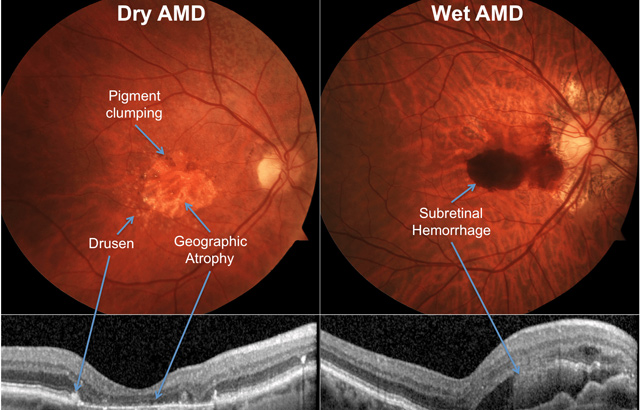Age-Related Macular Degeneration
Esteem Soft Limited | 04-Dec-2021| 2.1k Last Updated: 04-12-2021 02:47 AM

What is AMD?
Age-related macular degeneration (AMD) is an eye disease that can blur your central vision. It happens when aging causes damage to the macula — the part of the eye that controls sharp, straight-ahead vision. The macula is part of the retina (the light-sensitive tissue at the back of the eye).
AMD is a common condition — it’s a leading cause of vision loss for older adults. AMD doesn’t cause complete blindness, but losing your central vision can make it harder to see faces, read, drive, or do close-up work like cooking or fixing things around the house.
AMD happens very slowly in some people and faster in others. If you have early AMD, you may not notice vision loss for a long time. That’s why it’s important to get regular eye exams to find out if you have AMD.
What are the types and stages of AMD?
There are 2 types of AMD: dry and wet.
Most people with AMD have dry AMD (also called atrophic AMD). This is when the macula gets thinner with age. Dry AMD happens in 3 stages: early, intermediate, and late. It usually progresses slowly over several years. There’s no treatment for late dry AMD, but you can find ways to make the most of your remaining vision. And if you have late dry AMD in only 1 eye, you can take steps to protect your other eye.
Wet AMD (also called advanced neovascular AMD), is a less common type of late AMD that usually causes faster vision loss. Any stage of dry AMD can turn into wet AMD — but wet AMD is always a late stage. It happens when abnormal blood vessels grow in the back of the eye and damage the macula. The good news is that treatment options are available for wet AMD.
What are the symptoms of AMD?
The symptoms of AMD depend on the stage. Dry AMD happens in 3 stages: early, intermediate, and late. AMD is a progressive disease — which means symptoms usually get worse over time.
- Early dry AMD doesn’t cause any symptoms.
- In intermediate dry AMD, some people still have no symptoms. Others may notice mild symptoms, like mild blurriness in their central vision or trouble seeing in low lighting.
- In late AMD (wet or dry type), many people notice that straight lines start to look wavy or crooked. You may also notice a blurry area near the center of your vision. Over time, this blurry area may get bigger or you may see blank spots. Colors may also seem less bright than before, and you may have more trouble seeing in low lighting.
Straight lines looking wavy is a warning sign for late AMD. If you notice this symptom, see your eye doctor right away.
How can I lower my risk for AMD?
Research shows that you may be able to lower your risk of AMD (or slow vision loss from AMD) by making these healthy choices:
- Quit smoking — or don’t start
- Get regular physical activity
- Maintain healthy blood pressure and cholesterol levels
- Eat healthy foods, including leafy green vegetables and fish
